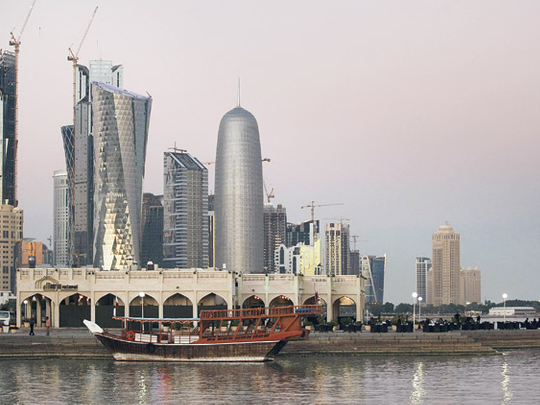
Dubai: Fund-raising activity in the Middle East reported healthy growth in equity and loan markets while the debt capital market issuance was constrained by pricing, a liquidity squeeze and credit quality issues.
Middle Eastern debt issuance reached $5.6 billion (Dh20.5 billion) during the second quarter, driven by the demand from financial services sectors, governments, and government related entities and telecommunications companies.
Debt issuance recorded a 32 per cent year on year decline during the first half of 2010 to post $10.9 billion.
Sovereign-linked issuance accounted for 39 per cent of the activity with investment grade corporate issuance accounting for 33.4 per cent.
The top Middle Eastern bond this year to date was issued by Egypt and worth $1.5 billion.
Top spot
Debt capital market fee reached $57.8 million so far this year the most active half year since H1 2007.
HSBC holds the top spot in the regional debt capital market fee raking for the first half of 2010 with a fee income of $10 million and 17.3 per cent market share.
"HSBC's ability to execute, sell, price and trade in the international debt capital markets is the reason issuers come to us to help them raise debt capital.
"Our unrivalled presence across the world's emerging markets means we are able to access pools of liquidity that others cannot," said Andrew Dell, Emerging Europe and Middle East and Africa DCM, Global Capital Financing, HSBC.
HSBC's extensive on-the-ground presence in the region and relationships with governments, corporates and investors seem to have helped the bank maintain its top position.
The loan activity in the second quarter of this year was at $3.3 billion, down from $9 billion during the first quarter.
Despite this, loan activity for the first half of the year reached $12.4 billion, up 92 per cent over last year.
The most active industry for Middle Eastern loan issuance was the financials industry with 54.6 per cent, while telecommunications was second with 36 per cent.
Standard Chartered topped the first half league tale in fee income from loan syndications in the region with $7.5 million and six per cent of market share.
"We have been very active in the regional loan syndication market.
"Even at the height of market turmoil we underwrote some issues in the region like the Qatar Aviation issue in last November. We have a healthy pipeline of deals lined up for the rest of the year," said Steve Perry, Regional Head of Loan Syndications Mena, Standard Chartered.
The largest Middle Eastern loan for the first half of 2010 issued by IPIC is worth $2.5 billion with the Bank of Tokyo-Mitsubishi UFJ, National Bank of Abu Dhabi and Santander leading.
Most active
The largest Middle Eastern loan for the second quarter 2010 was the $2 billion book run by BNP Paribas, DBS Bank, Qatar National Bank, Societe Generale, and RBS for Qatar Telecom (Qtel).
In the equity capital markets, issuance reached $5.6 billion for the first half of the year, an annual increase of 64 per cent.
Financial services sector was the most active sector in the equity capital markets, accounting for 57 per cent of the activity.
Central Bank of Libya, EFG Hermes and Aldukheil Financial Group come first, second and third respectively in the Middle Eastern ECM Ranking so far this year.
The largest equity issue of the year is the Arab Banking Corp BSC follow-on issued on the Bahrain Exchange worth $1.1 billion.












